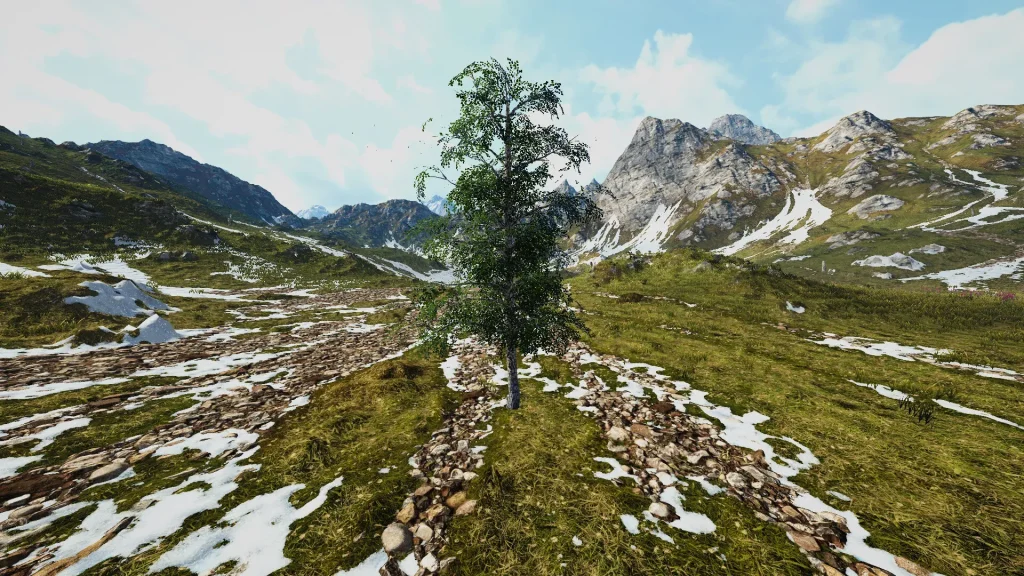Simulating nature has become a pervasive phenomenon in our contemporary world, where the beauty of the natural environment is increasingly reimagined in artificial formats. From meticulously crafted landscapes in theme parks to synthetic ecosystems in zoos, the artifice of nature reproduction raises profound questions about authenticity and our relationship with the real world. Renowned photographer Zed Nelson highlights this Anthropocene illusion through his evocative images, portraying spaces where the commodification of nature replaces genuine encounters with wildlife. As society turns to these crafted experiences, we must consider whether we are truly connecting with nature or merely experiencing a veneer of reality. In a time dominated by visual information and curated experiences, the challenge remains to discern the genuine from the imitation in our quest for connection with the natural world.
The concept of artificial nature, often viewed through the lens of man-made environments, invites us to explore how we engage with the wilderness. This dialogue encompasses a range of ideas, including nature imitation and the manufacture of landscapes that masquerade as authentic ecosystems. Zed Nelson’s photography serves as a powerful commentary on this phenomenon, exposing the tension between commodified experiences and the intrinsic beauty of undisturbed habitats. In an age characterized by the Anthropocene—the current geological epoch marked by significant human impact on Earth’s geology and ecosystems—appreciating the nuances of nature reproduction becomes crucial. By examining both the allure and pitfalls of these synthetic environments, we can better understand our collective psyche and the value we place on the natural world.
The Artifice of Simulating Nature
In today’s world, the concept of simulating nature has taken on a life of its own, particularly as showcased in Zed Nelson’s work. What was once a spontaneous exploration of the wild has become commodified, reshaped into a series of staged environments that mimic natural habitats. These artificial constructs raise critical questions about our genuine connection to the environment. As nature reproductions begin to dominate public perception, they often overshadow the original ecosystems, leading to an ‘Anthropocene illusion’ where we believe we are experiencing nature while we are, in fact, merely spectators of its simulation.
The Dalian Forest Zoo and the ersatz Devils Hole are prime examples of this phenomenon, where the very essence of ecological authenticity is altered for convenience and control. When visitors traverse these artificial landscapes, they encounter an experience smothered in layers of plastic and foam—far removed from the wild intricacies of nature. This commodification of nature not only detracts from its inherent value but also stimulates a misunderstood appreciation that reflects our disconnection from the authentic experiences of the natural world.
Commodification of Nature: An Emerging Concern
The commodification of nature presents a growing concern, particularly in an age dominated by consumerism. As Zed Nelson highlights in his photographs, our natural landscapes are increasingly transformed into pay-per-view spectacles. Parks and reserves, with their curated experiences, prioritize visitor engagement over ecological preservation. This leads to a stagnant format where wildlife is viewed not as entities with their own ecosystems but as mere attractions designed to entertain an audience.
From theme parks to zoos, the constructed environments cater to the desires of visitors rather than promoting a genuine interaction with nature. This approach creates what some have termed an ‘edutainment’ model, where the educational experiences are merely superficial facades masking a deeper societal denial of our role in environmental degradation. The more we engage with these commodified versions of nature, the less likely we are to foster a connection with the true essence of the environment.
The Role of Zed Nelson in Highlighting Nature’s Replication
Zed Nelson’s photography serves as a critical lens through which we can examine the replication and reproduction of nature. By traveling across various countries, Nelson documents the stark contrasts between authentic wildlife experiences and their oversimplified counterfeits. His work underscores the importance of visual storytelling in communicating the complexities of our relationship with nature. Through his striking imagery, he reveals the artifice that dominates our perceptions and encourages viewers to think critically about their interactions with these constructed environments.
Moreover, Nelson’s explorations challenge us to reconsider the narrative surrounding nature as a mere backdrop for human entertainment. By showcasing broken replicas and the wear and tear of artificial constructs, he emphasizes our collective obligation to preserve what remains of genuine natural habitats. His photographs evoke a sense of longing for authenticity and highlight the realities of our current environmental stance—a call to action for both individuals and society to recognize and cherish the remaining splendor of the natural world.
Trends in Nature Reproductions: A Critical Analysis
The trend toward nature reproductions signifies a fundamental change in how we engage with our environment. As Zed Nelson illustrates, artificial environments often represent a hyperreal version of nature that appeals to our senses while simultaneously distancing us from authentic natural experiences. The juxtaposition between the plastic foliage of a theme park and the wild, untamed beauty of a national park raises significant ethical questions: Are we, as a society, content with experiencing nature through this artificial lens? Or should we strive for deeper engagement with the wild?
The critical analysis of these trends reveals an underlying apprehension about the future of our ecological interactions. As each replica replaces reality, the essence of what it means to encounter nature fades. This shifts our values from preservation and discovery toward a minimization of nature’s complexities. Such commodified spectacles may attract visitors but risk reinforcing a narrative where the intricate web of biodiversity is viewed through a simplified, often kitsch, lens of entertainment.
The Anthropocene Illusion: Disconnect from Authenticity
The Anthropocene illusion manifests in how we perceive and interact with nature. As Nelson points out, our fascination with curated displays of wildlife can dilute our understanding of genuine ecological interactions. In theme parks, wildlife tours, and managed reserves, the artificiality of these experiences creates a disconnect from the true essence of nature. This distance can lead to a superficial appreciation of biodiversity where real interactions are substituted with mere observations of staged performances.
Moreover, this illusion reflects a broader societal trend of prioritizing spectacle over substance. Spectators often participate through their devices, capturing moments that may serve to enhance their social media presence rather than deepen their personal connection to the experience itself. This phenomenon raises essential questions about the impact of technology on our perception of reality and serves as a poignant reminder of the pitfalls of commodifying nature in ways that perpetuate disengagement from its authentic beauty.
Replicas vs. Reality: The Future of Nature Experiences
The ongoing debate between replicas versus reality in nature experiences poses significant implications for future generations. As the trend of commodified nature continues, the challenge lies in fostering a balance between creating engaging environments for learning and preserving the integrity of authentic ecosystems. Zed Nelson’s work underscores the pressing need for awareness regarding the ramifications of choosing simulated environments over real-life ecological experiences.
In navigating this terrain, it becomes vital for educators and environmental advocates to emphasize the value of authentic nature experiences. Engaging individuals in conservation efforts, ecological education, and experiential learning can help bridge the gap between awareness and action. By encouraging deeper connections to genuine wildlife, we can inspire future stewards of the environment and combat the normalization of artificial nature, pushing back against the commodification that threatens the very fabric of our natural world.
Attractions and Ecosystems: A Deteriorating Balance
The allure of attractions often threatens the delicate balance of natural ecosystems; this is a prevailing theme in Zed Nelson’s photographs of simulated environments. Each fabricated landscape draws visitors, but at the cost of displacing the untamed wilderness that traditionally provided not just beauty, but intrinsic ecological services. As more ecosystems are reshaped into spectacles, we risk eroding biodiversity and undermining the genetic wealth that sustains life on this planet.
In this light, the growing trend of blending amusement with ecological education demands critical scrutiny. While attractions aim to raise awareness about conservation, they can inadvertently promote a false sense of security regarding the state of the environment. By admiring replicas, audiences may mistakenly believe that nature can be endlessly recreated and manipulated without consequence, leading to a colonization of natural spaces for entertainment purposes. The challenge lies in redefining our relationship with nature—not as something to be commodified, but as a living entity that demands respect and protection.
Reimagining Our Relationship with Nature
As we explore the themes of nature reproduction presented by Zed Nelson, it becomes evident that a reimagining of our relationship with nature is crucial. The increased demand for experiential engagement through simulation often overshadows the urgency required for preserving natural habitats. By reflecting on Nelson’s poignant imagery, we are reminded of the authenticity that lies in experiencing nature in its raw form—untouched by the hands of commodification.
Reimagining this relationship calls for a fundamental shift in values, advocating for sustainable practices that prioritize conservation and immersive learning rather than mere spectacle. By understanding that true connections with nature are forged through authentic experiences, we can begin to resist the allure of artificiality and create pathways that foster genuine engagement with the environment. This shift is not merely about appreciating nature; it involves actively participating in its preservation and defending it against ongoing degradation.
Environmental Education: Beyond the Simulacra
Environmental education plays an integral role in addressing the shortcomings of simulated nature experiences. As Nelson’s work illustrates the inadequacies of manufactured interactions with wildlife, it becomes vital to prioritize education that equips future generations with the knowledge and skills to make informed decisions about conservation and sustainability. Moving beyond simulacra, we must strive for curricula that emphasize the interconnectedness of ecosystems, encouraging learners to appreciate natural complexity and foster a sense of stewardship.
By integrating real-world experiences into educational frameworks, we can cultivate a deeper understanding of ecological systems and their fragility. Activities like hands-on conservation projects, immersive nature experiences, and interactive field studies can encourage authentic encounters with the environment. This way, we can inspire a new generation of environmental advocates capable of challenging the commodified narratives surrounding nature and addressing the whims of the Anthropocene with resilience and respect.
Frequently Asked Questions
What does simulating nature refer to in the context of artificial nature?
Simulating nature refers to the practice of recreating natural environments and ecosystems through artificial means. This can include theme parks, wildlife exhibits, and other attractions designed to provide visitors with an experience of nature that is aesthetically pleasing but lacks genuine ecological integrity. In Zed Nelson’s “The Anthropocene Illusion,” he explores how artificial nature commodifies and distorts our perception of the real world.
How does the Anthropocene illusion affect our relationship with nature reproduction?
The Anthropocene illusion suggests that our attempts at nature reproduction, such as creating replicas of ecosystems or breeding programs for endangered species, can lead to a disconnect from the authentic experience of nature. Zed Nelson’s work highlights how these manufactured environments often prioritize spectacle and commodification over genuine ecological understanding, ultimately altering our relationship with the natural world.
What role does Zed Nelson’s photography play in understanding the commodification of nature?
Zed Nelson’s photography critically reveals the commodification of nature by capturing artificial environments that mimic real ecosystems. His images, showcased in “The Anthropocene Illusion,” depict places like the Italy in Miniature theme park and the faux Devils Hole, emphasizing the conflict between aesthetic illusion and the realities of natural decline, and provoking thought about our own engagement with these spaces.
Can simulated nature provide a true connection to the natural world?
Simulated nature often falls short of providing a true connection to the natural world. In his exploration of various artificial settings, Zed Nelson illustrates how these environments are controlled and curated, presenting a version of nature that lacks spontaneity and authenticity. This controlled experience can mask the degradation occurring in actual ecosystems, leading to a false sense of connection.
What are the implications of the artificial nature experienced at places like the Bronx Zoo or Longleat Safari Park?
At venues like the Bronx Zoo and Longleat Safari Park, the artificial nature experienced raises important questions regarding biodiversity and conservation. While these sites may educate the public about wildlife, they often present a sanitized view of nature that fails to address the complexities and challenges faced by ecosystems in the Anthropocene. Through his photography, Zed Nelson illustrates how these experiences contribute to a broader commodification and distortion of wildlife.
How does the experience of fake habitats, as seen in Nelson’s work, challenge perceptions of environmental authenticity?
The experience of fake habitats, highlighted in Zed Nelson’s work, challenges perceptions of environmental authenticity by presenting carefully curated visuals that lack the dynamic qualities of real ecosystems. These simulations can create an illusion of biodiversity and natural beauty, ultimately leading to disillusionment and encouraging spectators to overlook the environmental crises affecting genuine contexts.
What can we learn about our impact on nature from Zed Nelson’s photographs?
Zed Nelson’s photographs serve as a powerful commentary on the impact of human activity on nature, illustrating how our commodification and reproduction of environments contrasts sharply with the natural world’s complexities. By documenting these artificial representations, Nelson encourages viewers to reflect on the broader consequences of our disconnection from authentic nature and the cultural narratives we create around it.
| Key Point | Description |
|---|---|
| Zed Nelson’s Work | Explores humanity’s relationship with nature through photography. |
| The Devils Hole Pupfish | Analyzes the existence of the rare fish in both a natural and artificial habitat. |
| Simulations of Nature | Describes how natural environments are artificially recreated as attractions. |
| Impact of Photography | Nelson’s images highlight the artificiality of these environments and emotional disconnect with nature. |
| Commodification of Nature | Critiques how national parks and wildlife exhibits have turned into commercial experiences. |
Summary
Simulating nature has become a prevalent theme in contemporary art and attractions, where the reality of the natural world is often overshadowed by artificial replicas. Through Zed Nelson’s photography, we see how these simulations exemplify our disconnection from the true ecological essence. In an age where spectacle tends to dominate, the emotional and ecological richness of nature is compromised. Ultimately, this phenomenon underscores a broader societal trend where the real is increasingly replaced by a curated, commodified experience of nature.



